2024 Bajaj Chetak Premium Review: Feel-Good Features Come At A Cost
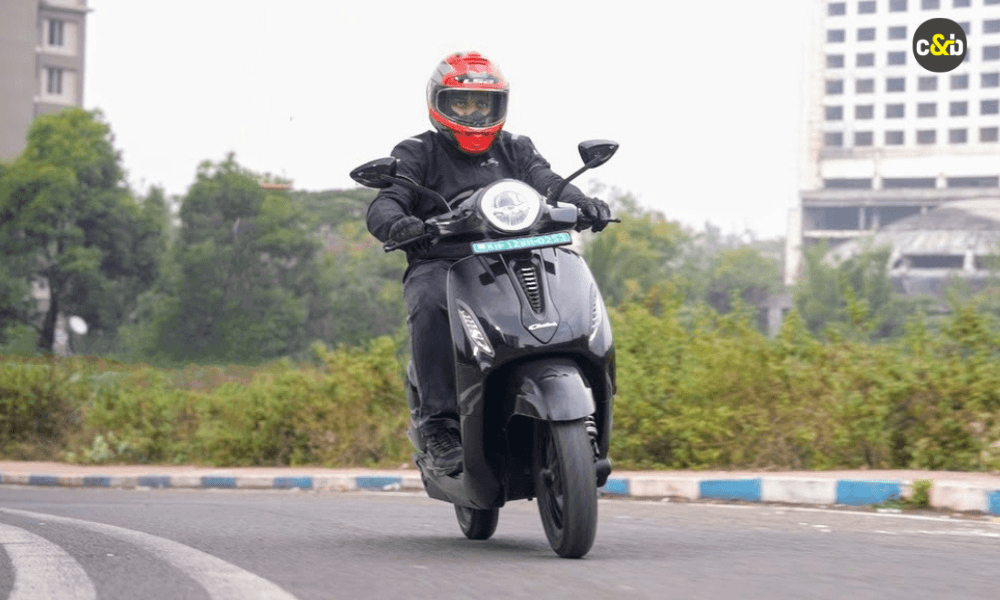
- 2024 Bajaj Chetak Premium has a certified range of up to 126 km thanks to increased battery capacity.
- Feels high-quality, but opting for a TFT over a touch display is questionable at this price.
- Top speed rises to 73 kmph, but overall performance remains decidedly sedate.
Despite continuing pretty much unchanged from the time we first saw it in 2019, the Chetak – reborn to kickstart Bajaj Auto’s new-age electric two-wheeler story – has tugged at heartstrings aplenty and found its way into thousands of homes over the last four years. While several startups shouted from the rooftops about revolutions while setting investor money ablaze, the defiant reincarnation of one of India’s most illustrious motoring icons quietly made a name for itself, and left a lasting impression on scores of eventual buyers. So popular it has turned out to be, that in the last few months, the Chetak has single-handedly pushed Bajaj into the top three electric two-wheeler brands, by volume, only behind TVS and Ola Electric.
Also Read: 2024 Bajaj Chetak Premium Launched at Rs 1.35 Lakh
The Chetak still looks fresh and attractive, even in 2024.
Now, in its fifth year, Bajaj has decided to give it an all important update to help the Chetak keep up with competition. Question is, do the changes meaningfully upgrade the Chetak experience? Let’s find out.
2024 Bajaj Chetak Premium: Design and styling
From a design and styling point of view, not much has changed, and to be honest, not much needed to change. The Chetak is still a reasonably fresh and unique-looking scooter. There are a few touches that distinguish the Premium version over the entry-level Urbane variant, including the black-and-brown seat and pillion grab handle, matte grey accents around all the lighting elements on the scooter, black alloys and a cool silver ‘Chetak’ decal on the wheel rim.
Darkened accents around lighting elements aimed at adding a sporty feel to the Chetak.
However, I feel the Premium variant could do with a few more colours, as the current choices – three, to be precise – are pretty limited, and Bajaj would do well to expand the colour palette.
2024 Bajaj Chetak Premium: Features and build quality
One of the biggest talking points on the 2024 Chetak is the addition of a 5.0-inch colour TFT display. With the optional ‘TecPac’ package activated, the Chetak Premium incorporates Bluetooth-enabled turn-by-turn navigation, Sport ride mode, hill hold assist, phone alerts (including call notifications), music controls, and you can control the screen using the new switchgear that has been installed on either side of the handlebar. Interestingly, TecPac (which costs Rs 9,000) is not a one-time purchase, but has to be renewed every 5 years, and buyers can only have it activated within one year of purchasing the scooter.
New control cubes are nicely damped and precise in operation.
All the switches feel pretty high-quality and have a damped feel to them in operation, the paint has an impressive lustre to it, and on the whole, the Chetak feels built to last. The screen, meanwhile, is a little small (the same size as the display on the base TVS iQube), and while it is fairly legible, I don’t think it’s that big a step up over the base Chetak’s colour LCD.
5.0-inch TFT display is small; turn-by-turn navigation isn't the most intuitive to use.
The navigation – which uses a base map from MapMyIndia’s Mappls – isn’t intuitive to use, and was a reminder of how something isn’t always better than nothing. This screen, in theory, puts the Chetak on an even footing with the iQube, but Bajaj opting for a small TFT over a touchscreen (citing concerns over durability and potential replacement costs) is a questionable decision in 2024, especially when there are other premium electric scooters that offer it for roughly the same kind of money.
Cable for the Chetak Premium's 800-watt onboard charger is neatly stored in a carry case that fits into the glove compartment.
In terms of versatility, you do have a glovebox on the Chetak, but most of it is occupied by the charging cable for the 800-watt onboard charger on the Chetak Premium (Urbane has a 650-watt portable charger), and the reshaped battery pack means underseat storage has increased marginally to 21 litres with a flatter surface, so you can carry a little more stuff with you.
Flatter floor means the Chetak's underseat storage now has a little more room than before.
2024 Bajaj Chetak Premium: Battery, range and performance
For 2024, Bajaj has increased battery capacity by using more energy-dense NMC cells, which drives total capacity to 3.2 kWh. The Chetak Premium now has a certified range of up to 126 km, which is notably higher than before.
Bajaj claims it has employed more energy-dense NMC cells to increase battery capacity.
Bajaj says the Premium's real-world range will be closer to 110 km, but in my experience, that might still be a slightly exaggerated estimate because this scooter seems likelier to get about 90-100 km of real-world range, especially if you ride it in Sport mode most of the time – which you will invariably end up doing.
To be able to build any real momentum, you have to switch to Sport mode, which provides decent acceleration.
During my time with it, I tried both Eco and Sport ride modes extensively. What I can tell you is Eco feels lazy to the point of being needlessly slow. Sport feels sprightlier and is definitely the more enjoyable – and more usable – mode to be riding in. With a small increase in peak torque (22.7 Nm from the previous 20) from the direct drive motor, the Chetak Premium’s top speed has risen to 73 kmph as standard. Out on the highway, I clocked a speedo-indicated 81 kmph.
The Chetak is at its most comfortable being ridden in a leisurely manner.
Overall, the Chetak still remains a scooter that likes to be ridden at leisure; this is not a scooter that’s asking to be pushed. Handling is neutral, it’s fairly stable at high speeds, but this is not a sporty scooter, so if that’s what you’re looking for, the Chetak will not be your cup of tea.
2024 Bajaj Chetak Premium: Verdict
Even with only a handful of changes, the Chetak still remains a very likeable scooter. You see, it still employs high-quality materials, feels cohesive and very well put together, and while it’s not outright exciting to ride, it will be very comfortable for somebody buying their first electric two-wheeler. That being said, I feel like the value proposition of the Chetak has been compromised a little with this update, because the Premium variant, with its larger screen and the optional TecPac package, will cost you over Rs 1.50 lakh on-road. At that price, it is a solid alternative to an iQube – which lags behind the Chetak in terms of quality and overall comfort – but it also gets uncomfortably close to something like an Ather 450X, which is a more exciting scooter and has more to offer in terms of features.
The 2024 Chetak Premium, with the TecPac package, costs Rs 1.45 lakh (ex-showroom).
What’s also worth noting is that the most accessible Ather scooter on the market, the 450S, now undercuts both the Chetak and the iQube on price, which means even the base Chetak – which misses out on something as essential as a front disc brake – may not necessarily be the best value buy around. And the same holds true for the Chetak Premium, which is well-built, but is ultimately a little too pricey for its own good.
Latest News
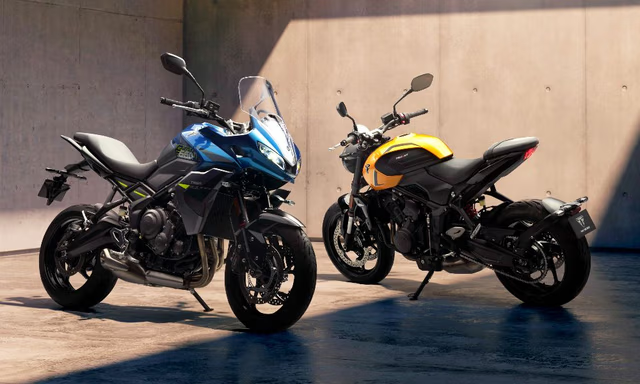 Janak Sorap | Jan 21, 20262026 Triumph Trident 660 and Tiger Sport 660 Unveiled; India Launch This YearBased on the setup offered on the Daytona 660, this is the most comprehensive update the Trident and Tiger Sport has received since their introduction.3 mins read
Janak Sorap | Jan 21, 20262026 Triumph Trident 660 and Tiger Sport 660 Unveiled; India Launch This YearBased on the setup offered on the Daytona 660, this is the most comprehensive update the Trident and Tiger Sport has received since their introduction.3 mins read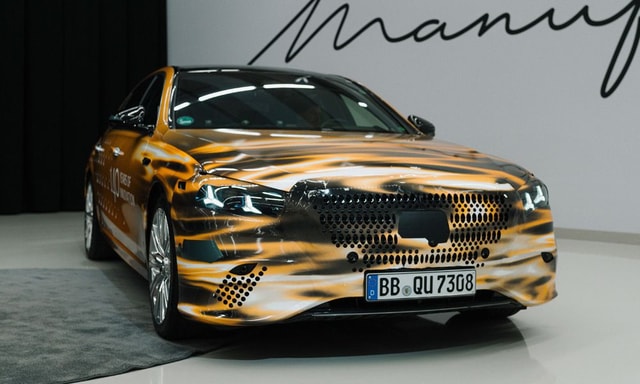 Jaiveer Mehra | Jan 21, 2026New Mercedes-Benz S-Class Previewed Ahead Of Jan 29 Global DebutMercedes says that over 50 per cent of the parts in the upcoming S-class are new, with the car also set to be L4 autonomous driving ready.3 mins read
Jaiveer Mehra | Jan 21, 2026New Mercedes-Benz S-Class Previewed Ahead Of Jan 29 Global DebutMercedes says that over 50 per cent of the parts in the upcoming S-class are new, with the car also set to be L4 autonomous driving ready.3 mins read car&bike Team | Jan 21, 20262026 Jeep Meridian Updated With Sliding Second Row Seats; Prices Start At Rs. 23.33 LakhThe update is limited to select three-row variants of the Jeep Meridian, namely, Limited and Overland.1 min read
car&bike Team | Jan 21, 20262026 Jeep Meridian Updated With Sliding Second Row Seats; Prices Start At Rs. 23.33 LakhThe update is limited to select three-row variants of the Jeep Meridian, namely, Limited and Overland.1 min read Jaiveer Mehra | Jan 21, 2026Skoda Kylaq Classic+, Prestige+ Prices RevealedSkoda has also confirmed a new Sportline variant that will join the lineup later in the year.1 min read
Jaiveer Mehra | Jan 21, 2026Skoda Kylaq Classic+, Prestige+ Prices RevealedSkoda has also confirmed a new Sportline variant that will join the lineup later in the year.1 min read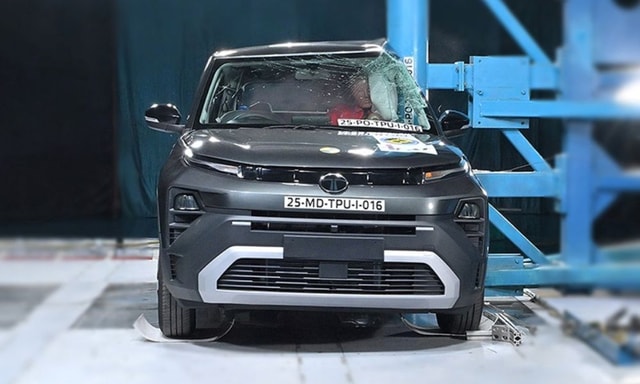 Jaiveer Mehra | Jan 20, 2026Tata Punch Facelift Bharat NCAP Crash Test Scores Revealed; Gets 5-Star RatingFacelifted internal combustion Punch secures 30.58 out of 32 for adult occupant protection and 45 out of 49 for child occupant protection.1 min read
Jaiveer Mehra | Jan 20, 2026Tata Punch Facelift Bharat NCAP Crash Test Scores Revealed; Gets 5-Star RatingFacelifted internal combustion Punch secures 30.58 out of 32 for adult occupant protection and 45 out of 49 for child occupant protection.1 min read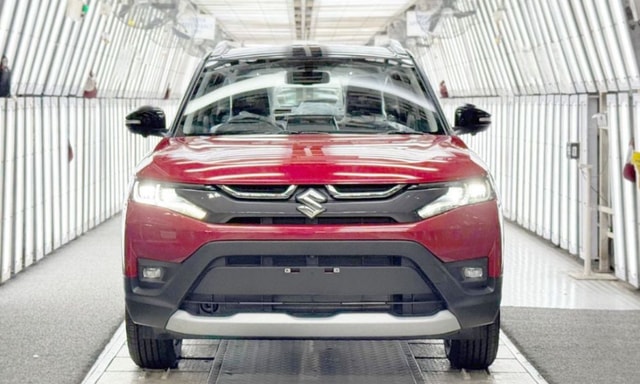 Seshan Vijayraghvan | Jan 20, 2026Maruti Suzuki To Invest Rs. 35,000 Crore For Setting Up New Manufacturing Plant In GujaratThe new facility will come up in Khoraj, on 1,750 acres of land provided by Gujarat Industrial Development Corporation (GIDC).2 mins read
Seshan Vijayraghvan | Jan 20, 2026Maruti Suzuki To Invest Rs. 35,000 Crore For Setting Up New Manufacturing Plant In GujaratThe new facility will come up in Khoraj, on 1,750 acres of land provided by Gujarat Industrial Development Corporation (GIDC).2 mins read
 Bilal Firfiray | Jan 21, 2026Tata Punch Facelift Review: New Turbo Engine; Same Old SoulWith the update, the Tata Punch facelift retains its character of being a healthy runabout, which is perfect for Indian roads. But have these changes made it any better?7 mins read
Bilal Firfiray | Jan 21, 2026Tata Punch Facelift Review: New Turbo Engine; Same Old SoulWith the update, the Tata Punch facelift retains its character of being a healthy runabout, which is perfect for Indian roads. But have these changes made it any better?7 mins read Amaan Ahmed | Jan 17, 2026Bajaj Chetak C25 First Ride Review: Basic, Likeable E-Scooter For First-Time RidersThe Chetak C25, in quite a few ways, is poles apart from the larger and more powerful 30 and 35 Series models, but in its mannerisms, it is very much a Chetak.8 mins read
Amaan Ahmed | Jan 17, 2026Bajaj Chetak C25 First Ride Review: Basic, Likeable E-Scooter For First-Time RidersThe Chetak C25, in quite a few ways, is poles apart from the larger and more powerful 30 and 35 Series models, but in its mannerisms, it is very much a Chetak.8 mins read Bilal Firfiray | Jan 9, 2026Toyota Urban Cruiser Hyryder: 10,000 km Long-Term ReviewAfter spending over three months and 10,000 km with the Toyota Urban Cruiser Hyryder Hybrid, we were impressed by its real-world mileage, seamless hybrid, practical comfort, and Toyota reliability. Is it the best C-SUV then?5 mins read
Bilal Firfiray | Jan 9, 2026Toyota Urban Cruiser Hyryder: 10,000 km Long-Term ReviewAfter spending over three months and 10,000 km with the Toyota Urban Cruiser Hyryder Hybrid, we were impressed by its real-world mileage, seamless hybrid, practical comfort, and Toyota reliability. Is it the best C-SUV then?5 mins read Seshan Vijayraghvan | Jan 8, 20262026 Mahindra XUV 7XO Review: Big On Tech, Bigger On ComfortThe new Mahindra XUV 7XO is flashier, feature packed, and comes with more advanced tech. But are the changes just incremental or actually substantial?1 min read
Seshan Vijayraghvan | Jan 8, 20262026 Mahindra XUV 7XO Review: Big On Tech, Bigger On ComfortThe new Mahindra XUV 7XO is flashier, feature packed, and comes with more advanced tech. But are the changes just incremental or actually substantial?1 min read Preetam Bora | Jan 10, 2026Simple One Gen 2 First Ride Review: 265 km Claimed Range!The Gen 2 model of Simple Energy’s first electric scooter gets a fair few updates, including new features, tech, more range and lighter weight. We spent a couple of hours with the Simple One Gen 2 to find out if it manages to impress.6 mins read
Preetam Bora | Jan 10, 2026Simple One Gen 2 First Ride Review: 265 km Claimed Range!The Gen 2 model of Simple Energy’s first electric scooter gets a fair few updates, including new features, tech, more range and lighter weight. We spent a couple of hours with the Simple One Gen 2 to find out if it manages to impress.6 mins read





















![Bajaj Dominar 400 [2019] Bajaj Dominar 400 [2019]](/_next/image?url=https%3A%2F%2Fimages.carandbike.com%2Fbike-images%2Fbig%2Fbajaj%2Fdominar-400-2019%2Fbajaj-dominar-400-2019.jpg%3Fv%3D20&w=640&q=90)
























































































































